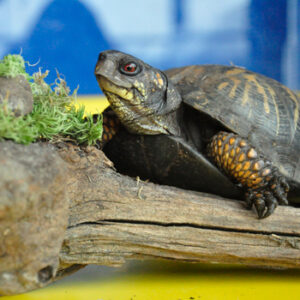The lungs are respiratory organs that are vital to the breathing process and necessary to acquire life-giving oxygen. Learn how your lungs work by using simple materials from around your house to build a model lung. Your family and friends are bound to be amazed by this awesome model and your knowledge of how lungs work!
Materials to Collect
- Clear plastic drink bottle (A Gatorade bottle is a good size)
- Two balloons
- Tape (masking tape or duct tape)
- Scissors
Build/Make Your Own/Try it Out
- Measure an inch or two from the bottom of the plastic bottle and cut the
 bottom off carefully. Note: adults may want to help kids with this since both the bottle and scissors can be sharp and a bit challenging to cut.
bottom off carefully. Note: adults may want to help kids with this since both the bottle and scissors can be sharp and a bit challenging to cut. - Take one balloon and put it inside the bottle. Then fold the bottom of the balloon around the rim of the bottle so the balloon hangs from the top. Wrap tape around the top if the balloon doesn’t seem snug around the bottle opening. You don’t want any air escaping, so make sure it is nice and tight!
- Tie a knot at the end of the remaining balloon and cut the
 large part of the balloon in half horizontally.
large part of the balloon in half horizontally. - Using the balloon half with the knot, stretch the open end over the bottom of the bottle. Again, this should be a tight fit. Use tape to secure if necessary.
- Gently pull down on the balloon from the knot. This should cause air to flow into the balloons within your lung model.
- Release the balloon with the knot and watch as the air is expelled from your lung model.
What is the Science?
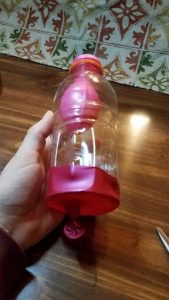
This model is showing us how our lungs work! The balloon at the bottom works like your diaphragm—a strong muscle that expands and contracts to cause your lungs to fill with air and then empty out again. The movement of the balloon matches your breathing – when you breathe in, your lungs fill with air just like the balloon inside the bottle did. That’s because the diaphragm expanded making room for air inside the lung. When you breathe out, your diaphragm contracts (or squeezes in) pushing all the air out of your lungs.
The same thing happened in your model! When you pulled down on the knot, the balloon inflated slightly and when let go the balloon deflated! Inside your body, you have two lungs that work together, and the diaphragm is below them. Air goes in and out of both of your lungs at the same time. This model just represents one lung.
Ask Your Young Scientists
- Put your hand on your stomach. What do you notice? When you breathe in you should feel your stomach expand. Why do you think your stomach expands when you breathe in?
- What are some things you can do to keep your lungs healthy?
- Try doing the experiment with a larger bottle and larger balloons. Does it change how the inside balloon reacts?
- Try pushing the membrane (the balloon) in. What happens to the balloon inside the bottle?
More to Explore
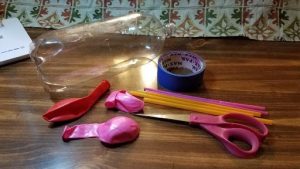 The model you built is of one lung. We have two lungs in our body. If you want to explore more you can build a similar model representing both lungs. For this, use a 2-liter soda bottle cut in half and attach the diaphragm balloon to the bottom like before. Then build an upside
The model you built is of one lung. We have two lungs in our body. If you want to explore more you can build a similar model representing both lungs. For this, use a 2-liter soda bottle cut in half and attach the diaphragm balloon to the bottom like before. Then build an upside 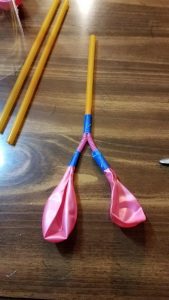 down Y-shaped trachea using straws taped together so that they are airtight. Tape two balloons on the ends of each straw in your Y shape. Then place it inside the bottle. Use clay or tape to secure the long end of the straw to the top of the bottle. Pull on the diaphragm balloon to see both lungs inflate!
down Y-shaped trachea using straws taped together so that they are airtight. Tape two balloons on the ends of each straw in your Y shape. Then place it inside the bottle. Use clay or tape to secure the long end of the straw to the top of the bottle. Pull on the diaphragm balloon to see both lungs inflate!
We want to see what you try at home. Share your creation with us on social media by using the #ScienceAtPlay and tagging @CTScienceCenter.

Kaila Ringgard is a Public Programs Educator at the Connecticut Science Center. She holds a degree from University of Massachusetts Amherst in Geology and Liberal Sciences. In her role at the Science Center, she creates and performs demonstrations for visitors that highlight many different fields in science and STEM careers. She is also responsible for taking care of the many reptiles and insects we have onsite, including our butterflies. You can usually find her in our galleries wearing a tie-dye lab coat with fun experiments and often an interesting animal you can meet.

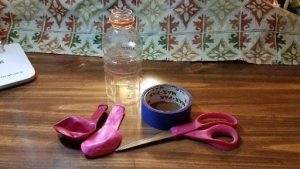
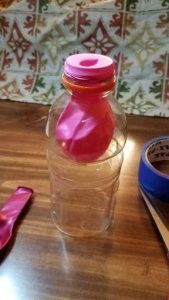 bottom off carefully.
bottom off carefully. 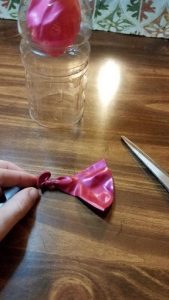 large part of the balloon in half horizontally.
large part of the balloon in half horizontally. 

